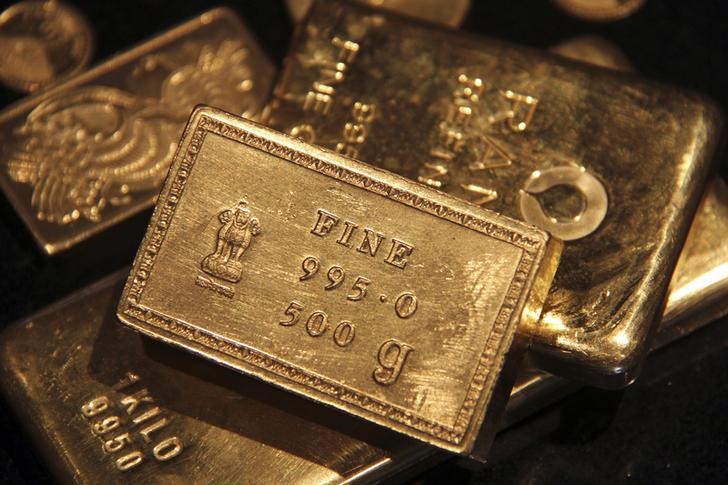By Barani Krishnan
Investing.com – Jay Powell uttered the magic words: “Will act as appropriate” to counter slowing business investments and growing economic uncertainties.
The only question now is, will the Fed chairman convert those words, which he's been uttering for the last month or so, into an interest-rate rate cut at the central bank’s meeting later in the month.
Gold investors think the rate cut is surely coming and pushed gold prices forcefully above $1,400 an ounce on Wednesday after Powell’s testimony on business and economic conditions to the House Financial Services Committee.
Spot gold, reflective of trades in bullion, traded at $1,413.65 per ounce by 1:13 PM ET (16:35 GMT), up $13.15, or 0.9%, on the day. The session high was $1,414.95.
Gold futures for August delivery, traded on the Comex division of the New York Mercantile Exchange, settled up $12, or 0.9%, to $1,412.50.
Investors have rushed into gold over the past two months, pushing the yellow metal from $1,200 levels to $1,400, as talk of a rate cut came into play. A rate cut will weaken the U.S. dollar and boost gold. In fact, the Dollar Index, which pits the greenback against a basket of currencies, fell 0.4%, its most in a day since June 21.
Powell’s testimony came ahead of a key event awaited by gold investors: release of the June meeting minutes of the Federal Reserve that would give an insight on why the central bank abstained from a rate cut last month, and how different things could be this time.
The Fed chief has been under tremendous pressure from President Donald Trump, who has all but threatened to fire him if he doesn’t authorize a rate cut soon. Powell has maintained that he will not be politically cowed and will not resign even if Trump demands it.
“Powell knows that if he pushes rate cuts expectations out until September, then that could trigger a furious response from both Donald Trump and the dollar, while stocks could fall further,” said Fawad Razaqzada, analyst on precious metals and currencies at FOREX.com in London.
“Thus, he will probably err on the side of caution and offer little in the way of strong hints about policy direction in the upcoming meetings,” Razaqzada said, citing pending consumer inflation figures as another key indicator for Fed action.
Business investments across the United States have slowed recently as uncertainties over the economic outlook linger, Powell said in prepared testimony to the House Financial Services Committee.
“Inflation has been running below the Federal Open Market Committee’s (FOMC) symmetric 2 percent objective, and crosscurrents, such as trade tensions and concerns about global growth, have been weighing on economic activity and the outlook,” he said, reiterating the central bank will “act as appropriate” to sustain the current economic expansion.
Investing.com's Fed Rate Monitor Tool continutes to suggest a 100% chance the Fed will cut its key federal funds rate from 2.25%-2.5% to 2%-2.25% in July. Powell also said in a recent speech “an ounce of prevention is worth more than a pound of cure,” a hint that the central bank might lean toward a so-called insurance cut to head off a potential economic slowdown.
Yet, some market participants had scaled back expectations that a July cut is almost a certainty after a 224,000-strong jobs growth in June signaled the economy may be too strong for an easing. The forecast jobs expansion was only 160,000.
Other Fed bankers lined up to speak this week are New York Fed President John Williams (NYSE:WMB), St Louis Fed president James Bullard, Fed Atlanta President Raphael Bostic, Fed Vice Chair for Supervision Randal Quarles, Richmond Fed President Thomas Barkin and Minneapolis Fed President Neel Kashkari.
Of these, the most closely watched would be Bullard, who was the only dissenting voice at the June Fed meeting, when the central bank decided to hold rates. The St. Louis Fed president is one of the more dovish members of the central bank’s policy-setting Federal Market Open Committee, or FOMC.
